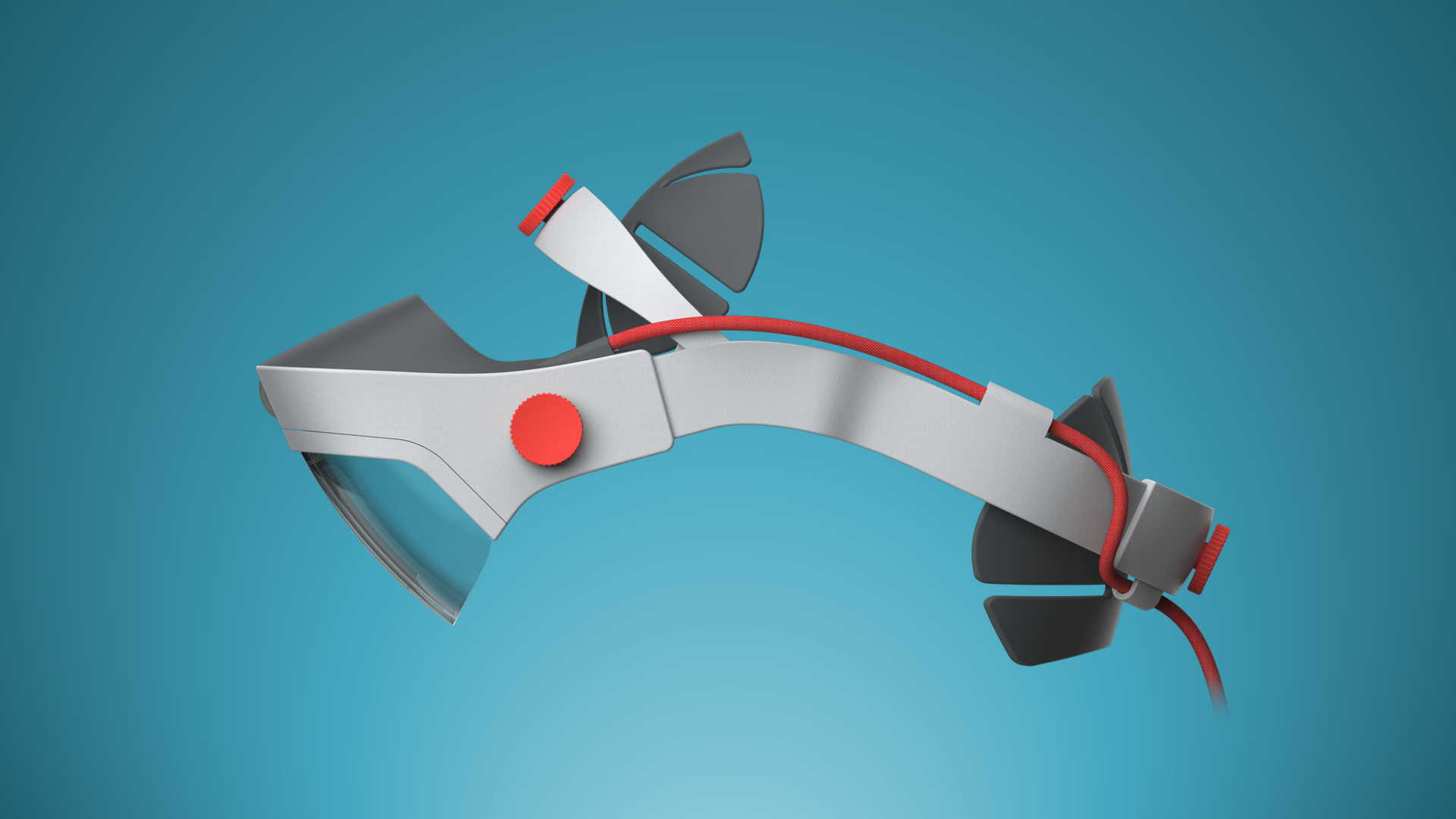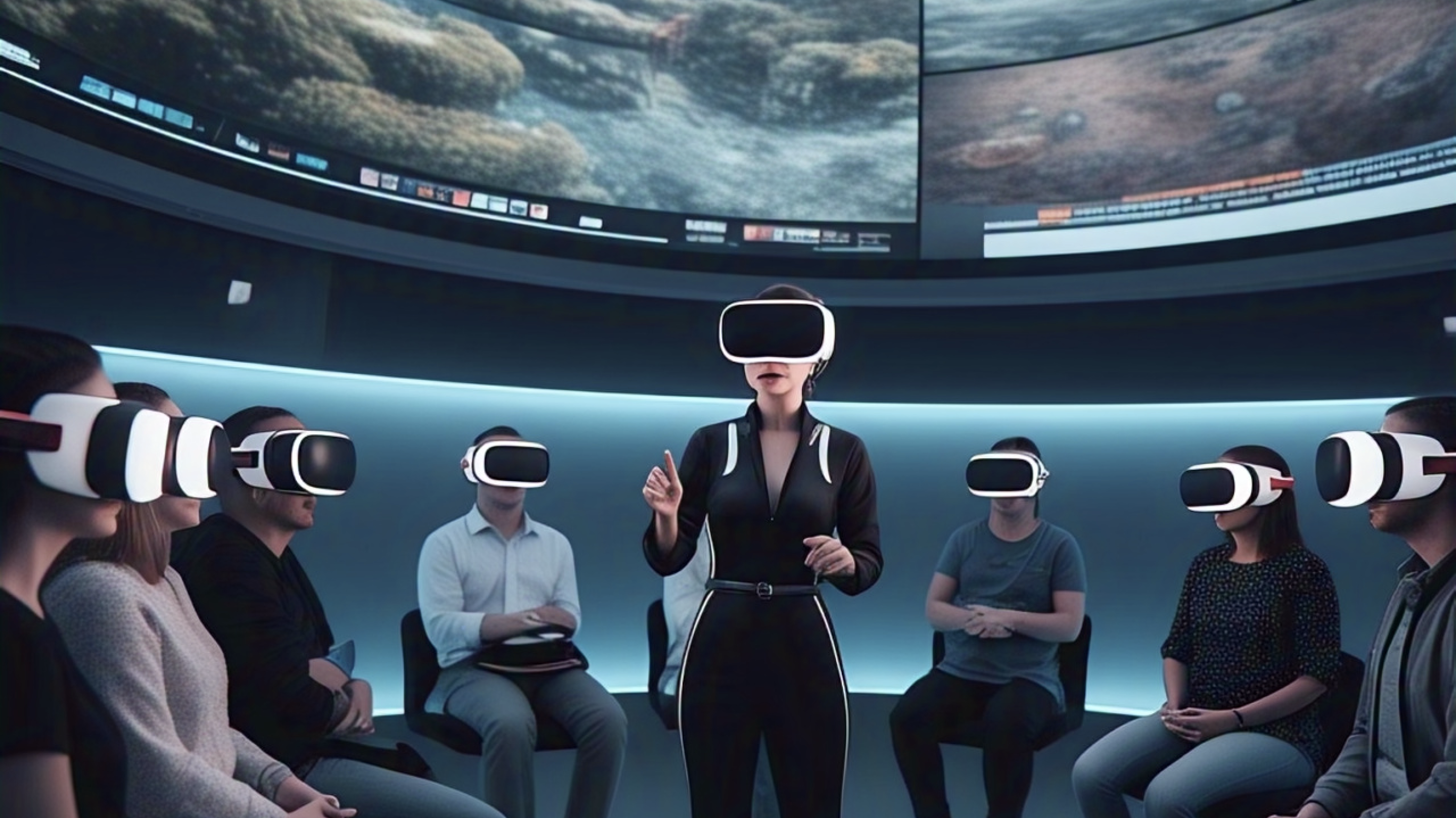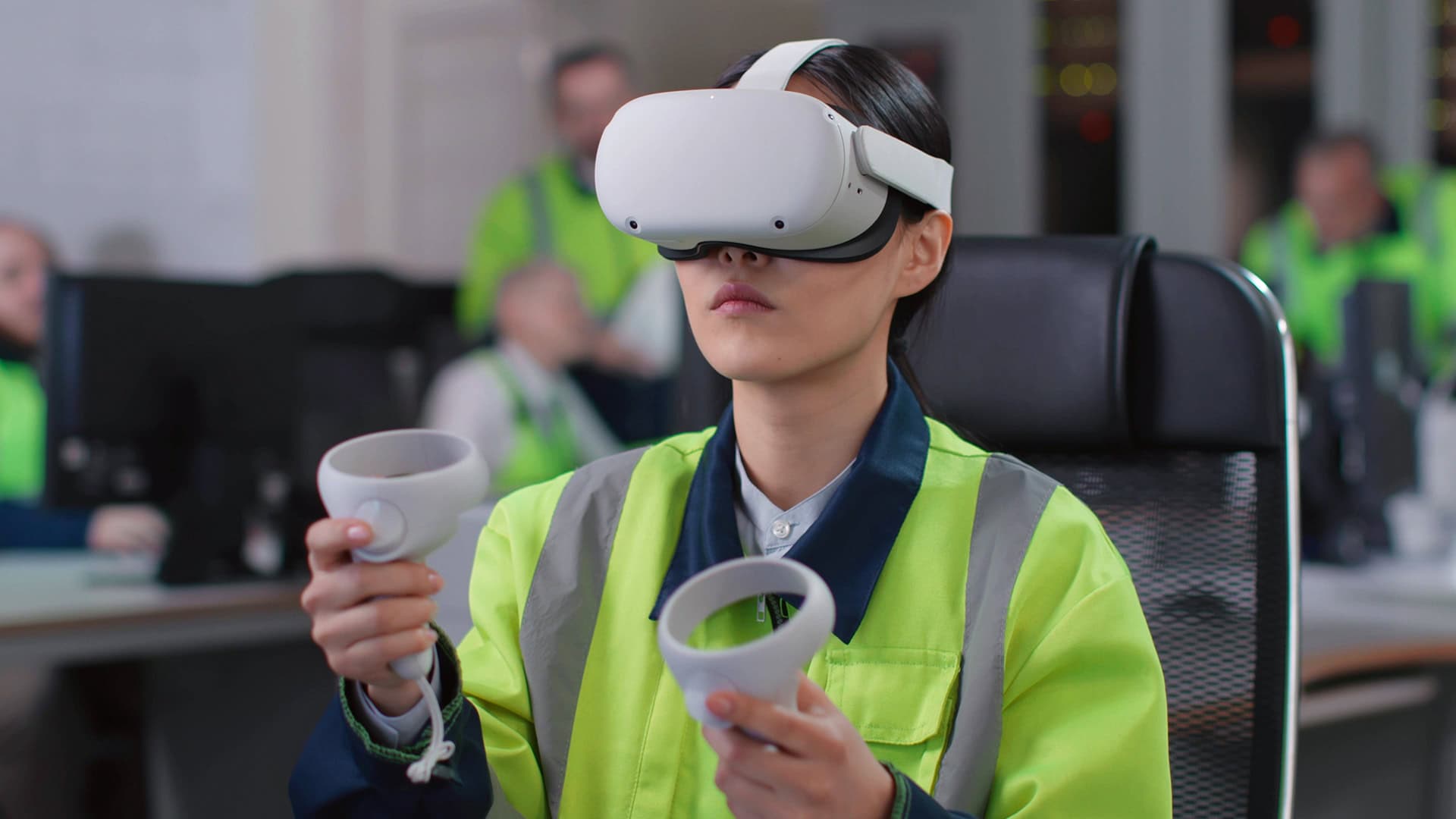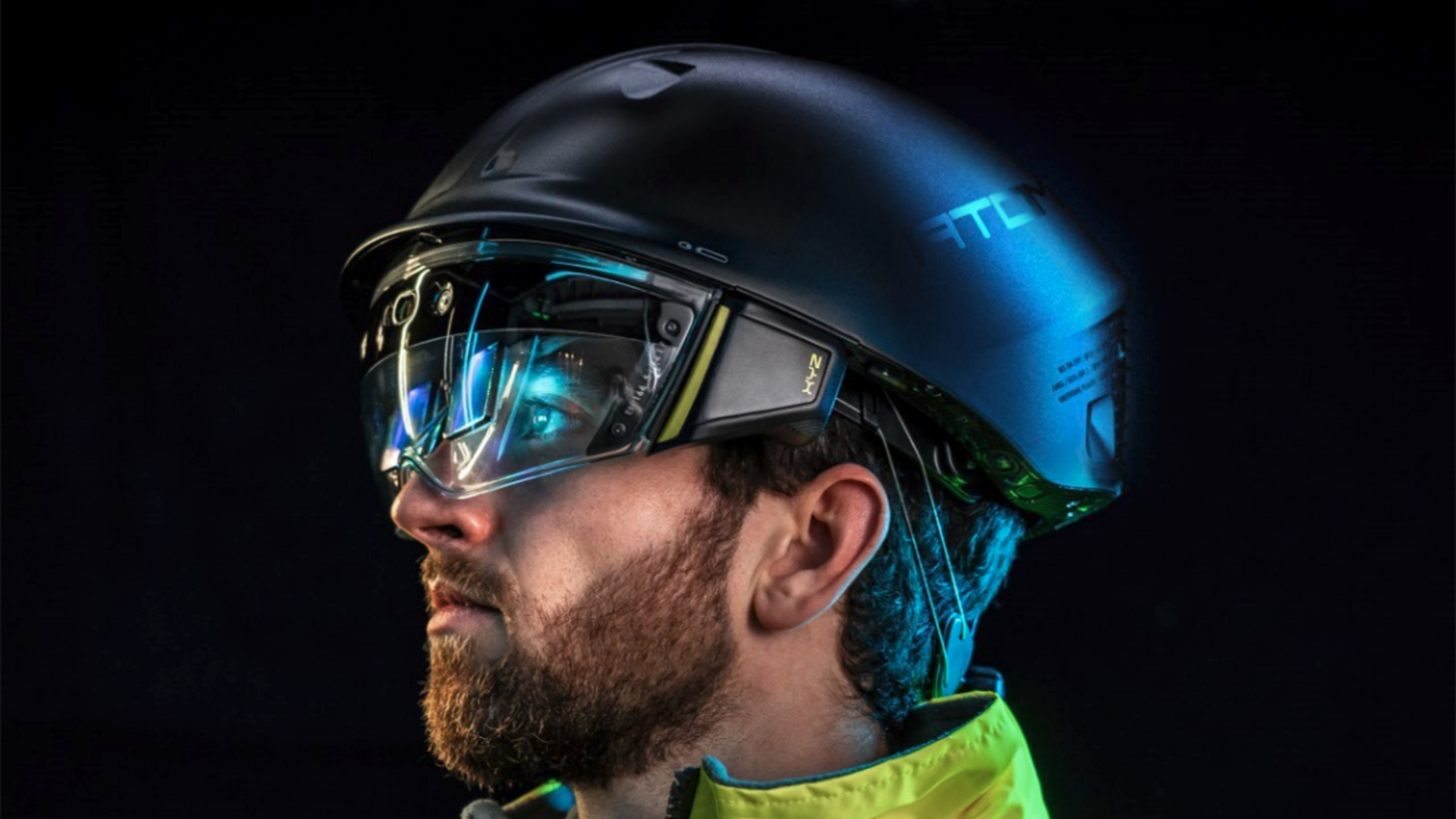Welcome back to AWE Talks, our series that revisits the best of AWE’s conference sessions. With AWE AWE USA 2024 just around the corner, we're switching things up. Rather than look back on past content, we're looking forward.
Specifically, we're interviewing inductees to AWE's Hall of Fame. What are their biggest insights, observations and advice for XR pros? This week we dive into these questions with Vuforia and Campfire founder Jay Wright.
This interview is also timely as it happens just as Campfire announces support for Apple Vision Pro – a move that unlocks new dimensions for its immersive collaboration capabilities (read more here).
See our discussion below and see more about Wright and his pioneering work on his XR Hall of Fame profile. And don't miss his AWE USA 2024 stage session: Houston, We Have an Inflection Point: The Rise of Spatial Collaboration.
__________
MB: Throughout your career in XR – being commemorated by your AWE Hall of Fame induction – what were the biggest lessons you learned?
JW: Customer problems are more important than competitor solutions. I’ve spent a ton of energy worrying about what competitors might or might not be working on, and how we’d respond. In nearly all cases, my concerns have been overblown and I wasted time and energy that would have been much better spent focusing on customer problems. The reality is that in the early stages of technology adoption, your real competition is what customers are doing today — not what other technology providers are offering.
MB: What were the biggest challenges? Were they tech-oriented or market-based? Or both?
JW: Without a doubt, the biggest challenge has been balancing the need to get people excited about the future of XR while tempering their expectations about what’s possible in the present. This has been an uphill battle as XR has been so overhyped and wasted so much investment capital. The challenge is the same whether seeking internal budget from a Fortune 500 company or investment capital from VCs. You need a good story, better execution, and infinite conviction.
MB: Any surprises along the way? What were things that you learned that changed your thinking/perspective or pre-conceived notions – either with the technology or the market dynamics?
JW: This wasn’t a surprise so much as something I’d read about but didn’t internalize until experiencing it firsthand. Solving technology problems is easy. Changing user behavior is hard. And sadly, no one makes money until user behavior changes. Even more sadly, spending more money (even lots of money) doesn’t make it change much faster.
MB: There have been ups and downs in XR in terms of excitement, investment, market troughs, etc. Where do you believe we are now in XR's lifecycle?
JW: The phase of adoption varies widely by use case. For example, when it comes to AR effects/filters for social media sharing we’re clearly in the early majority. But if we look at using XR headsets to replace desktop monitors, we’re still with innovators. When it comes to Campfire’s business, we’re dealing largely with early adopters and are starting to see some early majority that have crossed the chasm.
MB: Similarly, what advantages and underlying tech do today's XR innovators get to build upon, compared to resources and available tech in your early career?
JW: Compared to 2008, today’s innovators can build XR apps faster and easier for a larger installed base of XR-capable devices. Here’s what’s changed:
1. Nearly all smartphones now have sufficiently powerful camera, graphics, and computer vision pipelines to support AR experiences. In 2008, AR was only feasible on a handful of smartphone models. Today it’s so commonplace that it’s a common feature for top social networking and retail apps.
2. Developer tools for Android and iOS now have rich AR, AI, and CV frameworks and system services that significantly lower the bar for new developers to become proficient and focus on creativity instead of wrestling with low-level tech.
3. Tens of millions of smartphones are capable of capturing 3D scans through a combination of depth-sensing hardware and AI processing. This capability has yet to be widely used, but will open up new opportunities for innovators that harness it.
4. Meta’s Quest platform has reached critical mass for adoption and availability. There’s now a sufficiently large installed base to support consumer apps (largely games), and a sufficiently low price point to drive BYOD experimentation for business/enterprise.
MB: What are some things you're excited about for the near future of XR, and what predictions do you have for the next 1-2 years?
JW: Two things:
1. AI will address some of the biggest barriers to creating XR apps and experiences: 3D content creation and interaction between digital content and the physical world. I predict this will bring a new class of video effects to phones/headsets that feel like today’s Hollywood CGI, and a new class of tools for creating instructional content for enterprise and education.
Over the longer term, we can expect TikTok videos that look more like movie trailers, and AI trainers that appear as virtual humans to perform tasks right next to us.
2. Video passthrough will become more transparent (feel more like looking through glass) and less expensive. I predict VR headsets without color passthrough will cease to exist, and that all new headsets will default to passthrough for new user setup.
Over the longer term, video passthrough devices will get smaller and lighter, but it’s important to realize that today there is not a technical path to delivering the fidelity and immersiveness you see in a Quest 3 in an “everyday glasses” form factor like Ray Ban Meta glasses. If today’s video-passthrough experiences make it to an all-day pair of glasses, we’ll all need to recalibrate our definition of “fashionable”.HERE
MB: Given your perspective and depth of experience in this industry, what strategic advice do you have for startups or career advice for early-career pros in XR?
JW: XR apps are different. It sounds obvious — but the failure to appreciate how different has led to a graveyard of XR products and startups, and the loss of billions of dollars in investor capital. The fact is that compared to phones/desktops, XR apps must be exceptionally compelling (whether fun or useful) and exceptionally easy. This is because they require us to change deeply entrenched behaviors for interacting with devices we use habitually. For example, I use my phone in one hand in one position relative to my face. I use the other hand when I need more fingers. Most apps work more or less the same way with common UI elements, and I control them with a few basic interactions (tap, swipe, type, pinch, etc). This all goes out the window for XR apps, whether on a phone or, heaven forbid, a headset. Users need to learn a new way to interact, and if they’re going to undertake that effort, the reward (utility or fun) needs to be well worth it. This challenge is not easy, and the relative dearth of successful XR apps and devices is a testament to this fact.
MB: Thanks Jay for your time and insights. We will see you at AWE!
__________
 Want more XR insights and multimedia? ARtillery Intelligence offers an indexed and searchable library of XR intelligence known as ARtillery Pro. See more here.
Want more XR insights and multimedia? ARtillery Intelligence offers an indexed and searchable library of XR intelligence known as ARtillery Pro. See more here.
Specifically, we're interviewing inductees to AWE's Hall of Fame. What are their biggest insights, observations and advice for XR pros? This week we dive into these questions with Vuforia and Campfire founder Jay Wright.
This interview is also timely as it happens just as Campfire announces support for Apple Vision Pro – a move that unlocks new dimensions for its immersive collaboration capabilities (read more here).
See our discussion below and see more about Wright and his pioneering work on his XR Hall of Fame profile. And don't miss his AWE USA 2024 stage session: Houston, We Have an Inflection Point: The Rise of Spatial Collaboration.
__________
MB: Throughout your career in XR – being commemorated by your AWE Hall of Fame induction – what were the biggest lessons you learned?
JW: Customer problems are more important than competitor solutions. I’ve spent a ton of energy worrying about what competitors might or might not be working on, and how we’d respond. In nearly all cases, my concerns have been overblown and I wasted time and energy that would have been much better spent focusing on customer problems. The reality is that in the early stages of technology adoption, your real competition is what customers are doing today — not what other technology providers are offering.
MB: What were the biggest challenges? Were they tech-oriented or market-based? Or both?
JW: Without a doubt, the biggest challenge has been balancing the need to get people excited about the future of XR while tempering their expectations about what’s possible in the present. This has been an uphill battle as XR has been so overhyped and wasted so much investment capital. The challenge is the same whether seeking internal budget from a Fortune 500 company or investment capital from VCs. You need a good story, better execution, and infinite conviction.
MB: Any surprises along the way? What were things that you learned that changed your thinking/perspective or pre-conceived notions – either with the technology or the market dynamics?
JW: This wasn’t a surprise so much as something I’d read about but didn’t internalize until experiencing it firsthand. Solving technology problems is easy. Changing user behavior is hard. And sadly, no one makes money until user behavior changes. Even more sadly, spending more money (even lots of money) doesn’t make it change much faster.
MB: There have been ups and downs in XR in terms of excitement, investment, market troughs, etc. Where do you believe we are now in XR's lifecycle?
JW: The phase of adoption varies widely by use case. For example, when it comes to AR effects/filters for social media sharing we’re clearly in the early majority. But if we look at using XR headsets to replace desktop monitors, we’re still with innovators. When it comes to Campfire’s business, we’re dealing largely with early adopters and are starting to see some early majority that have crossed the chasm.
MB: Similarly, what advantages and underlying tech do today's XR innovators get to build upon, compared to resources and available tech in your early career?
JW: Compared to 2008, today’s innovators can build XR apps faster and easier for a larger installed base of XR-capable devices. Here’s what’s changed:
1. Nearly all smartphones now have sufficiently powerful camera, graphics, and computer vision pipelines to support AR experiences. In 2008, AR was only feasible on a handful of smartphone models. Today it’s so commonplace that it’s a common feature for top social networking and retail apps.
2. Developer tools for Android and iOS now have rich AR, AI, and CV frameworks and system services that significantly lower the bar for new developers to become proficient and focus on creativity instead of wrestling with low-level tech.
3. Tens of millions of smartphones are capable of capturing 3D scans through a combination of depth-sensing hardware and AI processing. This capability has yet to be widely used, but will open up new opportunities for innovators that harness it.
4. Meta’s Quest platform has reached critical mass for adoption and availability. There’s now a sufficiently large installed base to support consumer apps (largely games), and a sufficiently low price point to drive BYOD experimentation for business/enterprise.
MB: What are some things you're excited about for the near future of XR, and what predictions do you have for the next 1-2 years?
JW: Two things:
1. AI will address some of the biggest barriers to creating XR apps and experiences: 3D content creation and interaction between digital content and the physical world. I predict this will bring a new class of video effects to phones/headsets that feel like today’s Hollywood CGI, and a new class of tools for creating instructional content for enterprise and education.
Over the longer term, we can expect TikTok videos that look more like movie trailers, and AI trainers that appear as virtual humans to perform tasks right next to us.
2. Video passthrough will become more transparent (feel more like looking through glass) and less expensive. I predict VR headsets without color passthrough will cease to exist, and that all new headsets will default to passthrough for new user setup.
Over the longer term, video passthrough devices will get smaller and lighter, but it’s important to realize that today there is not a technical path to delivering the fidelity and immersiveness you see in a Quest 3 in an “everyday glasses” form factor like Ray Ban Meta glasses. If today’s video-passthrough experiences make it to an all-day pair of glasses, we’ll all need to recalibrate our definition of “fashionable”.HERE
MB: Given your perspective and depth of experience in this industry, what strategic advice do you have for startups or career advice for early-career pros in XR?
JW: XR apps are different. It sounds obvious — but the failure to appreciate how different has led to a graveyard of XR products and startups, and the loss of billions of dollars in investor capital. The fact is that compared to phones/desktops, XR apps must be exceptionally compelling (whether fun or useful) and exceptionally easy. This is because they require us to change deeply entrenched behaviors for interacting with devices we use habitually. For example, I use my phone in one hand in one position relative to my face. I use the other hand when I need more fingers. Most apps work more or less the same way with common UI elements, and I control them with a few basic interactions (tap, swipe, type, pinch, etc). This all goes out the window for XR apps, whether on a phone or, heaven forbid, a headset. Users need to learn a new way to interact, and if they’re going to undertake that effort, the reward (utility or fun) needs to be well worth it. This challenge is not easy, and the relative dearth of successful XR apps and devices is a testament to this fact.
MB: Thanks Jay for your time and insights. We will see you at AWE!
__________
 Want more XR insights and multimedia? ARtillery Intelligence offers an indexed and searchable library of XR intelligence known as ARtillery Pro. See more here.
Want more XR insights and multimedia? ARtillery Intelligence offers an indexed and searchable library of XR intelligence known as ARtillery Pro. See more here. 


